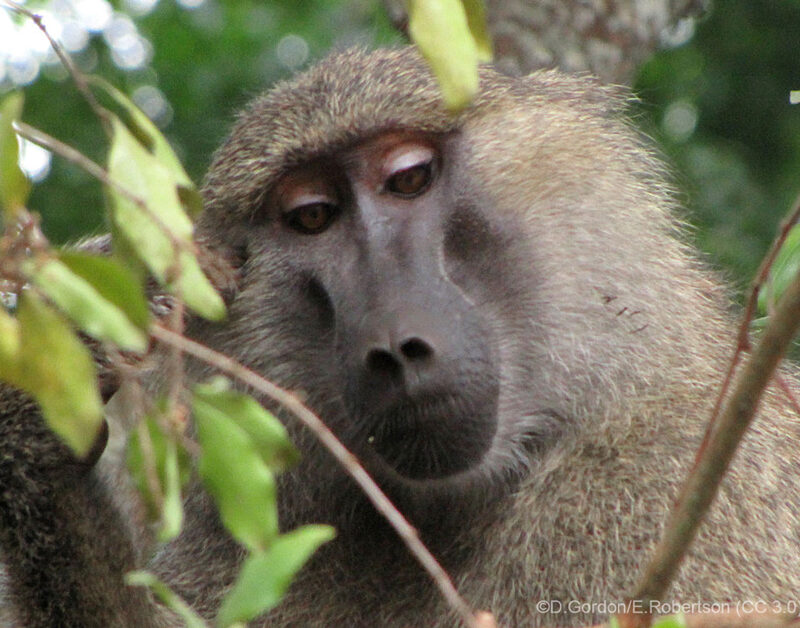Yellow Baboon
Species Data
Class: Mammalia
Order: Primates
Family: Cercopithecidae
Scientific Name: Papio cynocephalus
IUCN Red List status: Least Concern
Description
These long-nosed, yellowish-brown baboons have silver-coloured fringes on their hands and feet and are found in eastern Africa, from Southern Ethiopia down to Northern Mozambique.
Males are significantly larger than females, as they weigh around 23kg compared to the female average of 12kg. There are three subspecies of Yellow Baboon: Papio cynocephalus cynocephalus, P. c. ibeanus and P. c. kindae (which is now treated as a separate species.)
Behaviour
Yellow Baboons are mainly terrestrial creatures, roaming the forest floor to forage, nest and socialise. Their diet is mainly frugivorous, they are known to eat pods, grass, fruit, seeds, roots, leaves, flowers, buds, insects and sometimes meat.
They live in a large troop that can range from 20 members to 180, and use a communication system that includes more than 10 various different vocalisations and gestures. Males compete fiercely for a mate, and they also develop ‘friendships’ with females to enhance their mating opportunities – often defending them from other members of the troop. Females nurse, groom and play with their offspring and express different levels of infant care depending on their rank and age.


Habitat
Yellow Baboon prefer a woodland habitat and they range from southern Ethiopia, Somalia, coastal Kenya, northeastern Tanzania, Malawi, northern Mozambique and eastern Zambia.
The subspecies P. c. cynocephalus occurs in the central and south-eastern parts of the range including Zambia east of the Luangwa, Malawi, northern Mozambique and most of Tanzania, while P. c. ibeanus is found in far south-eastern Ethiopia, southern Somalia, and south-eastern and coastal Kenya.
Threats and Conservation
The biggest threat to Yellow Baboon populations is habitat destruction, hunting and the growing human population within the natural range of this species.
Parts of their range are being deforested for agricultural use, which destroys crucial foraging and sheltering sites for these primates. Conservation of this species is critical, as they play a huge role in the ecosystem of Africa’s forests – dispersing seeds and helping in soil aeration from digging for roots.
Starting in 2021 and with support from WLT, Tanzanian conservation body TFCG will create 10 reserves to protect a stretch of coastal forests in the Lindi District, southeastern Tanzania, that is a known home of Yellow Baboon.
